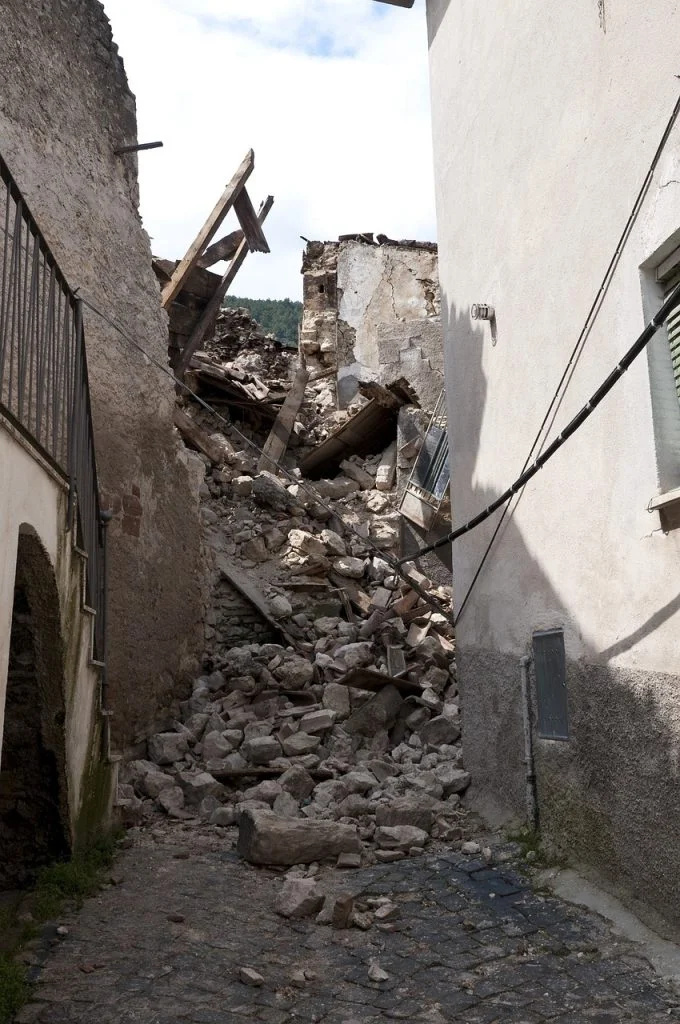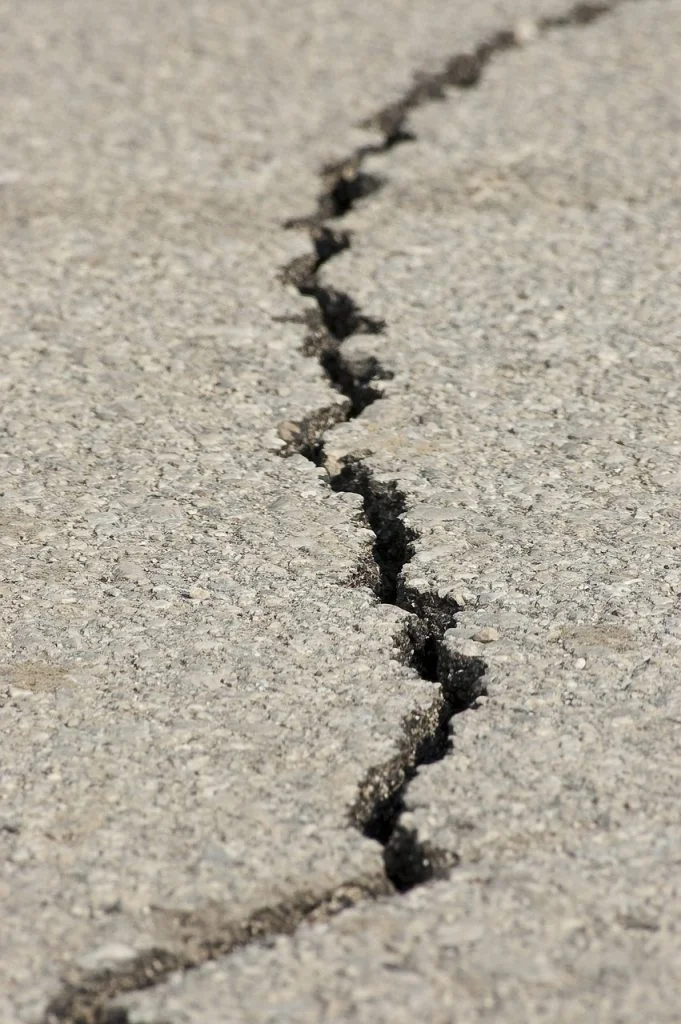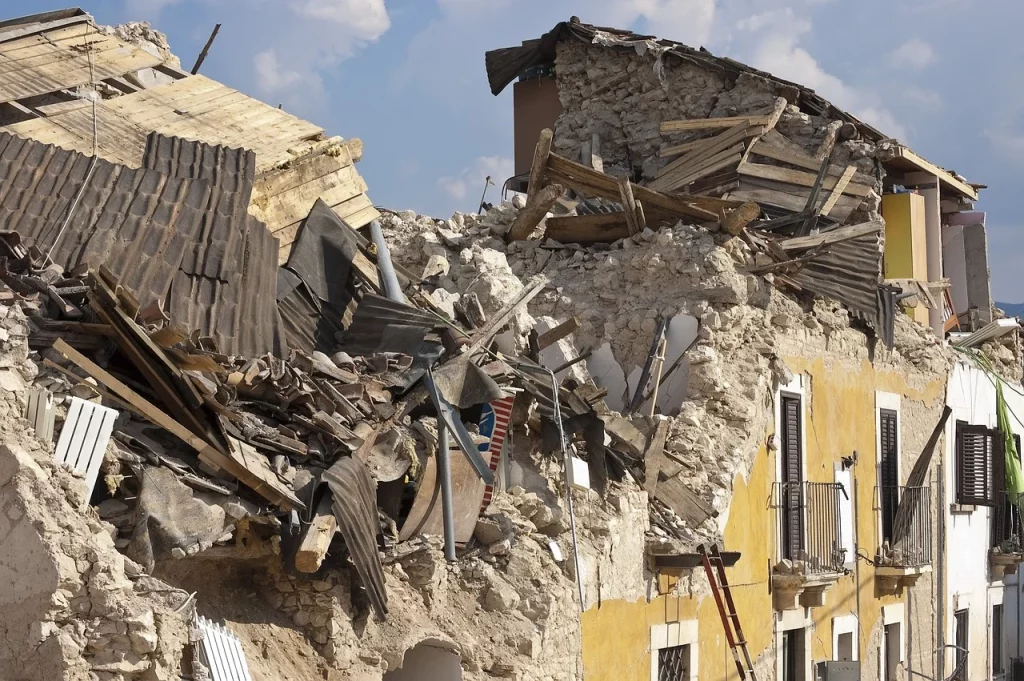Welcome to the shaky world of earthquakes, where the ground beneath our feet isn’t always as stable as we’d like to think! In this thrilling guide, we’ll dive into 50 fascinating facts about earthquakes, each more jaw-dropping than the last. Did you know, for instance, that the earth can literally ring like a bell after a big earthquake?
And speaking of big, have you ever wondered just how powerful Mother Nature can be? Well, buckle up, because we’re about to embark on a seismic journey that’ll rattle your bones – metaphorically speaking, of course!
Every earthquake leaves a footprint, a record in the sands of time.
Seismo Blog
Earthquake Facts
Welcome to our journey through the tremors of knowledge about earthquakes! Make sure to absorb each fact, as there’s a quiz waiting at the bottom of this page to test your seismic understanding.
- The Earth’s surface is made up of several large plates called tectonic plates. Earthquakes often occur when these plates move against each other.
- Seismology is the scientific study of earthquakes and the propagation of elastic waves through the Earth or through other planet-like bodies.
- The point on the Earth’s surface directly above the earthquake’s origin is called the epicenter.
- An earthquake’s power is measured on the Richter scale, which is logarithmic.
- The most destructive earthquake ever recorded was in Shaanxi, China in 1556, with an estimated death toll of approximately 830,000 people.
- Subduction zones, where one tectonic plate slides under another, are sites of high seismic activity.
- The focus, or hypocenter, is the actual point under the surface where the earthquake starts.
- After the main shock of an earthquake, aftershocks can continue for days, weeks, or even months.
- Liquefaction is a phenomenon where the strength and stiffness of soil is reduced by earthquake shaking.
- The 1960 Valdivia earthquake in Chile is the most powerful earthquake ever recorded, with a magnitude of 9.5.
- Japan is one of the most earthquake-prone countries due to its location along the Pacific Ring of Fire.
- An earthquake early warning system can alert users seconds before the shaking begins.
- The longest earthquake recorded lasted for approximately 10 minutes, during the 2004 Indian Ocean earthquake.

- The San Andreas Fault in California is one of the most studied and dangerous faults in the world.
- Tsunamis are often triggered by underwater earthquakes.
- The depth of an earthquake can greatly affect the level of damage it causes.
- Earthquake swarms are sequences of earthquakes striking in a specific area within a short period of time.
- The elastic rebound theory explains how energy is stored in rocks and then released in an earthquake.
- Seismic waves are the waves of energy caused by the sudden breaking of rock within the earth or an explosion.
- Building codes in earthquake-prone areas are designed to mitigate damage and save lives.
- The moment magnitude scale has replaced the Richter scale for most modern seismic measurements.
- A seismograph is an instrument that records the motion of the ground during an earthquake.
- Minor earthquakes occurring globally can be indicators of larger ones to follow.
- P-Waves and S-Waves are two types of seismic waves produced by earthquakes.
- Human activities, like mining and reservoir-induced seismicity, can also trigger earthquakes.
- The concept of seismic hazard is used to assess the risk of earthquakes in a particular area.
- Historical earthquake records are used for seismic hazard analysis.
- Soil amplification can increase the damage caused by an earthquake.

- An earthquake’s intensity is measured by the Modified Mercalli Intensity Scale.
- Plateau earthquakes are caused by the movement of tectonic plates in high plateau regions.
- The Inner Core of the Earth can affect the speed and direction of seismic waves.
- Seismic retrofitting is the process of strengthening older buildings to make them more resistant to seismic activity.
- Microseisms are very small-scale earthquakes that are not felt by humans.
- Induced seismicity refers to earthquakes that result from human activities.
- Earthquake prediction is currently not reliable, but ongoing research aims to improve it.
- The triangulation method is used to locate an earthquake’s epicenter.
- Secondary hazards of earthquakes can include landslides, fires, and floods.
- The fault plane is the surface along which the slip occurs during an earthquake.

- Strike-slip faults are where two blocks of Earth’s crust slide past each other horizontally.
- The intensity of an earthquake decreases with distance from the epicenter.
- Isostatic adjustment is the process of the Earth’s crust rising or falling in response to changes in mass distribution, like after a large earthquake.
- Shear waves are a type of seismic wave that cause particles to move perpendicularly to the direction of wave propagation.
- Some animals are believed to sense an impending earthquake before humans can.
- The seismic gap hypothesis suggests that earthquakes are more likely in areas where they haven’t occurred for a while.
- Underwater volcanic eruptions can also cause earthquakes.
- Seismic isolation is a technique used in building design to reduce the effects of ground motion.
- Some ancient civilizations believed earthquakes were caused by the actions of gods or giant creatures.
- The primary hazard of an earthquake is the ground shaking itself.
- Compressive stress in the Earth’s crust can lead to earthquake formation.
- The impact of an earthquake can be mitigated through proper urban planning and emergency preparedness.
Earthquake Myths

Now that we’ve explored all these facts, let’s shake things up by debunking some common myths.
- Earthquakes Can Be Predicted
Despite advancements in science, predicting the exact time and location of an earthquake is still not possible. Seismologists can only calculate the probabilities of future quakes. - Big Earthquakes Always Cause Tsunamis
Not all earthquakes result in tsunamis. Tsunamis are mainly caused by underwater quakes, but the earthquake’s magnitude, depth, and the ocean floor’s shape play crucial roles. - Small Earthquakes Prevent Big Ones
Small quakes, or foreshocks, don’t necessarily prevent larger ones. They can sometimes be precursors to a major quake, but often they’re just minor releases of the earth’s stress. - Standing in a Doorway is Safest During an Earthquake
This is outdated advice. In modern homes, doorways are no stronger than other parts of the house. It’s safer to drop, cover, and hold under a sturdy table. - Earthquakes Only Occur on the West Coast of the USA
Earthquakes can happen in many areas, not just the West Coast. The U.S. has several seismic zones, including the New Madrid fault in the central U.S. and the East Coast.
No products found.
Earthquake Quotes

Earthquakes remind us of the dynamic nature of our planet, a force both fearsome and awe-inspiring. In the midst of such power, human words capture the emotions. Here are five of my favorite quotes about earthquakes.
Logarithmic plots are a device of the devil.
Charles Francis Richter
Charles Francis Richter, known for creating the Richter magnitude scale, humorously comments on the complexities and challenges of representing earthquake magnitudes logarithmically.
Earthquake storms are as necessary to the stability of the landscape as storms of rain and snow; one is as natural as the other.
John Muir
Naturalist John Muir reflects on the natural and essential role of earthquakes in shaping and maintaining the landscape.
Landslides, earthquakes, and tsunamis are the three major natural hazards on our planet.
Kyoji Sassa
Geoscientist Kyoji Sassa categorizes landslides, earthquakes, and tsunamis as the most significant natural hazards faced by the Earth.
The 1906 San Francisco earthquake was a moment when reality and legend merged.
Simon Winchester
Author Simon Winchester captures the surreal and almost mythical nature of the 1906 San Francisco earthquake, blending historical fact with the lore that surrounds it.
The economical use of fuel is a necessity brought about by the earthquake.
Ellen Henrietta Swallow Richards
Ellen Henrietta Swallow Richards, a pioneering industrial and environmental chemist, highlights the urgent need for efficient fuel use following the disruptions caused by an earthquake.
Earthquake FAQ

After all these great quotes, it’s time to check the last section before the quiz. Let’s read together some of the most frequently asked questions about earthquakes online.
- Can Earthquakes Cause Tsunamis?
Yes, earthquakes can indeed cause tsunamis, especially those that occur under the ocean. When an earthquake happens beneath the sea, it can displace a huge amount of water, creating powerful sea waves that turn into tsunamis. These waves can travel long distances and cause significant destruction when they reach coastlines. - How Do Earthquakes Occur?
Earthquakes occur due to the movement of tectonic plates beneath the Earth’s surface. The Earth’s crust is divided into several large and small plates that float on the semi-fluid asthenosphere beneath them. When these plates move, they sometimes get stuck at their edges due to friction. When the stress on the edge overcomes the friction, there is an abrupt release of energy that creates seismic waves, leading to an earthquake. - Can Earthquakes Cause Volcanic Eruptions?
While it’s less common, earthquakes can sometimes trigger volcanic eruptions. This typically happens if the earthquake occurs near a volcanic region and is strong enough to alter the underground magma pathways. However, it’s important to note that not all earthquakes will cause eruptions; various geological factors play a role. - Are Earthquakes Predictable?
As of now, earthquakes cannot be precisely predicted. Scientists can identify regions that are more likely to experience earthquakes based on historical data and tectonic plate movements, but predicting the exact time and magnitude of an earthquake is currently beyond our scientific capabilities. - Can Earthquakes Happen Anywhere?
Technically, earthquakes can happen almost anywhere in the world, but they are far more likely to occur near the edges of the Earth’s tectonic plates. Some regions are known for their seismic activity, like the Pacific Ring of Fire, while others are relatively stable. However, minor earthquakes can still occur in unexpected places due to local geological conditions.
No products found.
Earthquake Trivia

Welcome to the earthquake quiz! If you don’t get any questions right, brace yourself; you might just feel a small tremor in your chair!
Conclusion
And that’s a wrap on the shaky subject of earthquakes. Who knew the Earth could throw such a party under our feet, right? Just remember, when the ground starts grooving, it’s not just trying to throw you off balance, it’s reminding us to stay vigilant.
So, a quick question for you: If you had to name a pet after an earthquake feature, what would it be? ‘Epicenter the cat‘ sounds pretty cool, doesn’t it?
4 Sources Used For This ArticleEarthquake Facts & Earthquake Fantasy – Usgs
Earthquake – Detailed Pedia
Earth: Earthquake – HandWiki


